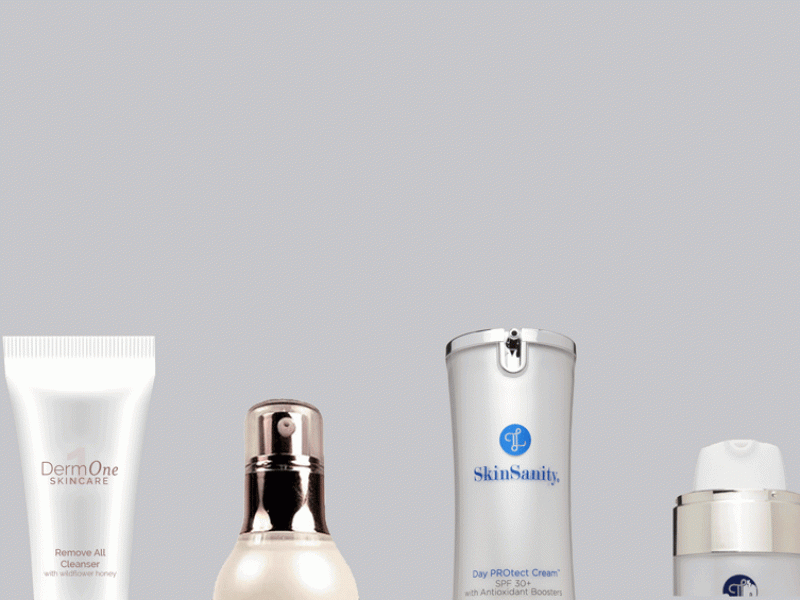
SKINCARE STEPS YOU DON’T WANT TO SKIP

Wash, scrub, dry, repeat – sound familiar? Whatever your daily skincare routine, there are a few essential elements you should always embrace.
Follow our super simple four-step plan and unveil the flawless complexion of your dreams…
1. Cleanse this way for top-notch skin
Taking the number one spot and for very good reason, it’s cleansing! This daily ritual is by far the most important step in every skincare routine. It’s where cellular debris (that’s product of our skin´s metabolism to you and I!), environmental pollutants and makeup are all removed, leaving your skin au naturel. Get this process wrong and your skin could be unbalanced for up to 12 hours, leading to inflammation, which is the main cause of skin conditions.
To keep you on track, we have a few quick tips. All cleansers, whether water-based, creamy, or otherwise, should consist of the following:
- Gentle surfactants, so as not to strip the skin´s natural oils and stimulate an inflammation
- Simple, natural ingredients. Pssst… there’s no need to pay for fancy actives like hyaluronic acid and coenzyme Q10 as you’re only rinsing them away.
- Moisturizing and soothing properties to help neutralize toxins
- A slightly acidic pH of five or just below to support healthy skin functions
- Lightweight ingredients, so as to avoid leaving a residue on the skin´s surface
2. Switch up your serum to see better results
Perhaps the most therapeutic part of any skincare routine is smoothing on your favorite, nourishing serum. Generally, oil or water-based serums contain substances that are 20 times more biologically active than many other creams, meaning they’re speedily absorbed by the skin and yield impressive results. Serums can reach the stratum spinosum – the second innermost layer of the skin just after the basal layer – and this greater absorption means that serums can target skin issues and transport the actives where they are most needed.
Things to consider before you get going:
- Serums should be applied twice-daily, straight after cleansing.
- After applying serums, always follow up with a moisturizer - it creates a protective layer over the serum so it doesn’t
- Apply serum morning and night for optimum skin health
- Apply with fingertips so as to avoid wasting it on your hands and massage thoroughly into your skin in a circular motion for 30 seconds.
- People with sensitive skin should use these carefully, as they contain active and concentrated ingredients.
3. Massage in moisture for even better hydration
Moisturizing regularly should be a part of any good skincare regime, whatever your skin type – even if you have oily skin that’s prone to breakouts. In fact, applying a moisturizer immediately after a topical acne treatment can help to reduce dryness and irritation.
Additionally, when moisturizing oils are applied on the surface of the skin, a signal is generated that will decrease the amount of sebum produced by the sebaceous glands, leaving skin less oily.
Moisturizing is important to hydrate your skin and prevent moisture from escaping. Leaving out this vital skincare step can accelerate redness or flaking and, in time, can allow the formation of deep wrinkles. But it’s not all about the products; drinking enough water throughout the day, taking omega-3 fish oil (or algal DHA as a vegan alternative) and eating a healthy nutritious diet rich in vitamins and antioxidants goes a long way to keeping your skin looking health and glowing.
A couple of things to consider:
- Opt for products with as few chemicals and artificial fragrances as possible.
- Pick a plant-based option if you can - you’ll find these beauties are loaded with essential vitamins and antioxidants.
- Massaging your moisturizer in a circular motion helps stimulate blood circulation and new cell generation.
4. Exfoliating enzymes take skin from good to darn right radiant
The average human is made up of a staggering 1.6 trillion skin cells and (we know this isn’t glamorous, but…) we shed about one million dead skin cells every darn day. When these cells stick around on your skin, they can leave your complexion looking… a little meh.
Exfoliation not only rids your face of dead cells leaving it clear and bright (and blackhead-free!), it also improves the effectiveness of your regular skincare routine, allowing your serums and creams to penetrate deeper and work more effectively.
As a general rule, we recommend exfoliating two or three times a week alongside your usual cleansing regime. Too much and you risk damaging the skin barrier, but too little and your complexion may become dull.
There are two exfoliation methods you should know about, physical and enzymatic:
- Physical exfoliation, such as facial scrubs, work by physically removing dead skin rather than dissolving it. Be aware, these products contain irritating or coarse particles, which can scratch your skin. Scrub ingredients to stay away from include sugar granules, coarse salt, baking soda, and apricot and walnut shells.
- Enzymatic exfoliation is our preferred choice and enzymes can do some pretty cool stuff. Those used in enzyme exfoliants are called proteolytic, a fancy science-y word that means able to breakdown or dissolve proteins. They can’t over exfoliate - they’re smart like that - and they can only digest the ‘dead’ skin cells, revealing a brighter, healthier complexion. Perfect for us sensitive skin types.

Leave a comment
This site is protected by hCaptcha and the hCaptcha Privacy Policy and Terms of Service apply.